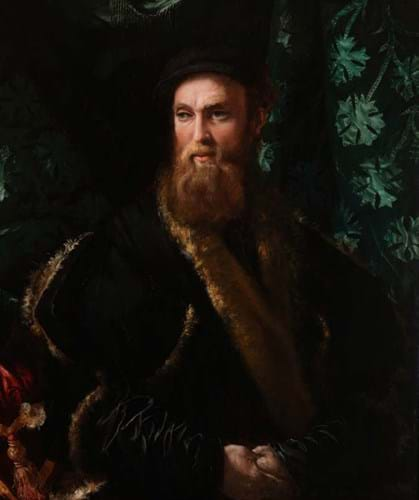
A portrait of Florentine banker Bindo Altoviti painted on marble which has been acquired by the Metropolitan Museum of Art in New York.
Image copyright: Bruce M. White
The Met received the work by the Italian Renaissance artist Francesco Salviati (1510-63) as a gift from the late collector and long-standing supporter of the museum, Assadour ‘Aso’ O Tavitian.
Born in Bulgaria of Armenian descent, Tavitian emigrated to New York as a young man and went on to co-found software firm Syncsort. A major collector of Old Master paintings, sculpture, English furniture and Persian rugs, he bought the portrait at Sotheby’s London in 2008.
Back then it was catalogued as by fellow Italian painter Girolamo da Carpi (1501-56) and it was sold for 10 times over estimate at £2.7m (despite its fragmentary condition), with London dealer Daniel Katz ending up as the underbidder.
Stone base
Measuring 2ft 11in x 2ft 5in (88 x 73cm), the portrait of the powerful Florentine banker and opponent to the Medici family Bindo Altoviti (1491-1557) was executed on a one-inch thick marble slab.
The acquisition represents the first painting on marble to enter the Met’s collection.
Director of the Met Max Hollein said: “Salviati’s work is simply extraordinary, both in its material aspect, on marble, and in its painterly execution.”
The museum’s curator in charge of European paintings Stephan Wolohojian added: “Artists in 16th century Rome often painted on slate. Painting on marble, however, was incredibly rare. I know of no other portrait of this large dimension on marble from the 16th century.
“Salviati returned to Rome in the early 1540s after an extended stay in northern Italian artistic centres, such as Venice and Bologna, and the rich colour and material opulence of this portrait extends from there.
“It is easy to imagine Bindo engaging an artist to create his likeness on marble in a non- Florentine manner as a defiant gesture against the Medici.”
Scholarly debate
In terms of who painted it, the work has been the subject of scholarly debate.
It has previously been attributed to Jan van Calcar (c.1499-1546) and Girolamo Bedoli (c.1500-69) as well as Girolamo da Carpi who, at around the time of the Sotheby’s sale, was believed to be the most likely candidate by a number of art historians including Grégoire Extermann and Philippe Costamagna.
However, the work was first attributed to Francesco Salviati in the mid-1990s.
His authorship has gained traction since 2019 when Carlo Falciani, an art historian and professor at the Accademia di Belle Arte in Florence, argued that the monumentality of the figure had no parallel in the works of Girolamo da Carpi.














